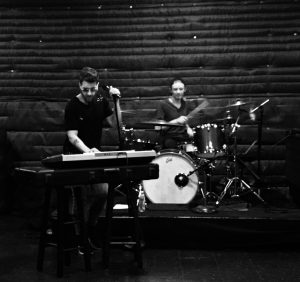First Things First – The Best Way to Plan & Rehearse Your Show
 We all know by this time in our lives, the importance of doing things in the right order…whether we DO that or not is another issue! Skipping a step or jumping ahead while baking a cake or putting together a piece of furniture will have a sad outcome, and won’t end up looking like the picture, or tasting like it should.
We all know by this time in our lives, the importance of doing things in the right order…whether we DO that or not is another issue! Skipping a step or jumping ahead while baking a cake or putting together a piece of furniture will have a sad outcome, and won’t end up looking like the picture, or tasting like it should.
Same goes when it comes to putting your show together. If the core isn’t right, you’re just slapping glitter over cardboard….or something like that. Let me explain.
There have been a few times when Tom or I have been called in AFTER the song order has been determined, or after backing tracks and musical segues are produced, and are then expected to ‘do our thing’. But our hands are tied.
Anyone who is familiar with what we do, knows that when we work with an artist, we always start with the right arrangement of the song so we can extract the moments that people connect with. But if we’re locked into pre-determined stems/tracks and set order or a musical transition that’s already been produced, then forget it.
All we can do at that point is figure out some visual things, but even THAT will be limited since tweaking an arrangement gives us the freedom to create more compelling visuals.
For instance, let’s say your guitar player sings a lot of background vocal parts. That keeps him glued to his mic stand for much of the show. Since our goal is to change up what people in the audience see, to keep their interest we’ll look for ways to change things up occasionally and get him out from behind his stand and pedal board. This might mean for example, extending that chorus breakdown, ie: drummer keeps going, most instruments are out, he puts his guitar behind his back, takes the mic off the stand and walks over to the lead singer and they sing the chorus together over just the drums & bass to highlight the great vocal harmonies. Maybe they do it twice! Maybe they get the audience singing with them and that involves tripling that breakdown chorus – who knows?! We try it all in rehearsal and see what works best.
Now we have a nice moment. NOW whoever is producing your backing tracks can edit them to fit the new arrangement and you aren’t locked in by the original recorded version. And for sure – those musical segues and video content on big screens behind you can be a big asset if you have them, but they’ll come across even stronger if your base arrangements and order are right!
The moment created affects where it lands in the set order, which in turn dictates how to end a song in a way that gets the reaction you want. There are certain places where you need a song to end big – either with a trash-can type thing or a sustained landing chord. Dead stop endings work in certain places too, but if an audience doesn’t know your songs, ending abruptly on an unresolved chord can leave a big question mark for the audience – ‘Is it over? Do I clap now?’ – and you get a tepid reaction. The reason we use a trash-can ending – for instance at the end of your first song – is to get an immediate response since it leaves no question on whether the song is over. Big trash, cut-off, applause. You will then get a read on where the audience is by listening to how enthusiastic the applause level is.
 We all know by this time in our lives, the importance of doing things in the right order…whether we DO that or not is another issue! Skipping a step or jumping ahead while baking a cake or putting together a piece of furniture will have a sad outcome, and won’t end up looking like the picture, or tasting like it should.
We all know by this time in our lives, the importance of doing things in the right order…whether we DO that or not is another issue! Skipping a step or jumping ahead while baking a cake or putting together a piece of furniture will have a sad outcome, and won’t end up looking like the picture, or tasting like it should.